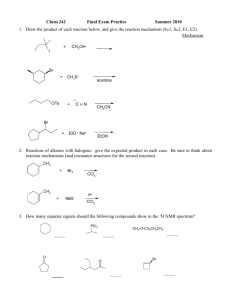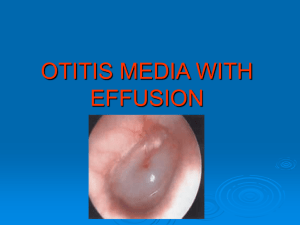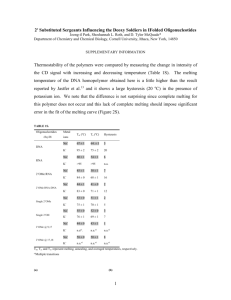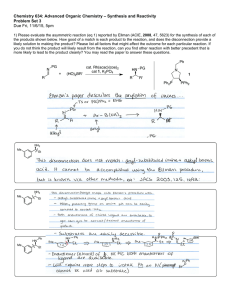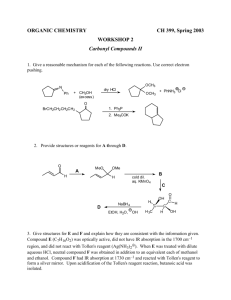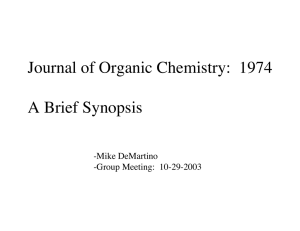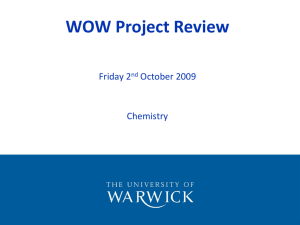Section 07 - Section Practice Exam II Solutions
advertisement
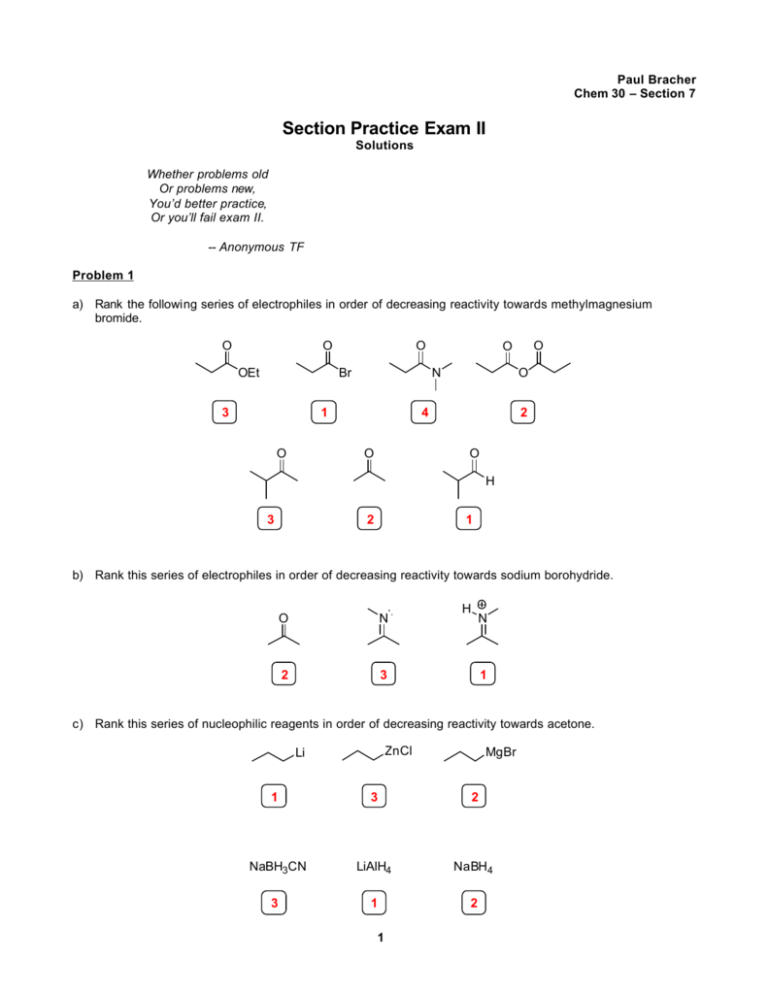
Paul Bracher Chem 30 – Section 7 Section Practice Exam II Solutions Whether problems old Or problems new, You’d better practice, Or you’ll fail exam II. -- Anonymous TF Problem 1 a) Rank the following series of electrophiles in order of decreasing reactivity towards methylmagnesium bromide. O O OEt O Br 3 N 1 O O 4 O O O 2 O H 3 2 1 b) Rank this series of electrophiles in order of decreasing reactivity towards sodium borohydride. O N 2 3 H N 1 c) Rank this series of nucleophilic reagents in order of decreasing reactivity towards acetone. ZnCl Li MgBr 1 3 2 NaBH3CN LiAlH4 NaBH4 3 1 2 1 Problem 2 (Problem Set #2, 1999). Provide a mechanism for the following reaction. OH O 1) excess Ph 3P CH2 OH 2) H+ / H2O workup Solution Ph3P CH2 Ph3P CH2 O O H O O O H O Ph3P CH2 O Ph3 P O H O H PPh 3 O Ph3P O O • H OH When a problem says “excess,” you will probably have to use more than one equivalent of that reagent. 2 Problem 3 (Problem Set #3, 1999). Compound A reacts with methylamine considerably faster than compound B. Provide an explanation for this observation. O O O O A B O Recall that both oxygen atoms in carboxylic acids and esters are 2 sp hybridized (see section handout if you’ve forgotten why). The σ O O bonds in compound B are able to rotate, and one conformation allows for overlap between the nO (filled) and σ*C–O (empty) orbitals. O This is a stabilizing interaction. In compound A, the lone pair is held outward, preventing this interaction. Since we would expect the n σ* energetic considerations associated with the nucleophilic attack to be A B similar for both ester compounds, compound B will react more slowly because of its extra stability. More precisely, the energy of the transition states will be similar because they are both alkyl esters, but the activation energy for B will be greater because its ground state is lowerin-energy. Another way to look at the situation is that donating electron density into the σ*C–O of B will raise the energy of the orbital, widening the HOMO-LUMO gap with the lone pair of methylamine and slowing the reaction. Problem 4 (Problem Set #3, 2000). Provide an explanation for the following observed trend in the rate of hydrolysis of aryl diethyl acetals. X X X OMe Me H NO2 + O H / H 2O H O O log k 2.66 3.07 2.86 0.39 The rate determining step of this reaction should be the acid-catalyzed loss of ethanol: X X O O X H+ H O EtOH O H O Thus, we would expect X groups that stabilize the generation of the positive charge to speed the reaction. This hypothesis is supported by the data for X=NO2 and X=Me. The nitro group is electron withdrawing and will destabilize the carbocation, explaining why it slows the reaction. The electron donating methyl group will help to stabilize the carbocation, explaining why the reaction is faster for X=Me versus X=H. In the case of X=OMe, the inductive effect (oxygen is electronegative and electron withdrawing) appears to predominate over the resonance effect. This is easily explained by the substituent being meta to the carbocation—if it were oriented ortho or para, then we would expect considerable stabilization by a resonance effect (convince yourself with resonance structures drawn from “pushing arrows”). 3 Problem 5 (based on Problem Set #3, 1999). Provide an efficient synthesis of compound C using starting materials containing no more than four carbon atoms. O N N O C Solution Strategy: 1) Note that the compound is symmetric. This suggests a cyclic precursor. 2) The fact that there are six carbons in the chain suggests a six-membered ring. 3) We are allowed to use any starting material with fewer than four carbons. We can make six-membered rings from [4+2] cycloadditions… + 1) O3 2) H2O 2, NaOH COOH HOOC H N DCC As an alternate last step, you could use SOCl2 to create the acid halide then subsequently react with ethyl methyl amine to yield the amide O N N O C 4 Problem 6 Provide a mechanism for the following transformation. O OH S O O O t-BuO O O O heat O O Solution OTs H OTs O O O t-BuO O H H O O O H 3C CH3 + HOOC O H H O O O H OTs O HOOC O O H TsOH H H O O O O OH H HO O H O O HO H O H+ transfer OH O OH OH O OH OH H 2O H 2O OH O OH OH H+ transfer H OTs O H O H 2O H 2O O O O HO OH OH O O O OH OH O O O H+ transfer OH O O O O • O Tert-butyl esters are not very electrophilic—in fact, they are considered protected carboxylic acids. Your mechanism is wrong if you attack the carbonyl group before deprotecting. 5 Problem 7 (A section problem repeat originally from the Fall 2003 Chem 30 Exam III Review Session). The amine below undergoes the following reaction when treated with sodium nitrite in the presence of acid. OH CHO NH2 NaNO2 AcOH / H2O a) Provide an arrow formalism mechanism for this transformation H O N H 3C O OH O O stepwise O H H O N OH H N O CH3 H + transfer OH H N H 2O OH AcOH OH N N O OH OH H H N OH N OH NH2 AcO N AcO H O N H OH OH N H OH H N N O OH H H AcOH O N H OH N N N2 AcO CHO • O H O H + It is also acceptable to dehydrate prior to nucleophilic attack to generate N≡O b) Draw a Newman projection showing the orbitals that interact in the step where the nitrogen atom attached to the ring is lost. OH N N σC-C σ*C-N OH N N H H H H H H 6 N N OH The nitrogen leaving group and the shifting carbon bond are oriented antiperiplanar Problem 8 Provide an asymmetric synthesis of the compound below using the two indicated starting materials and any inorganic reagents that meet your fancy. O Ph OMe O MgBr O & Cl OMe Ph Solution O Cl MgBr OMe ZnCl2 Ph ZnCl OMe O OMe Zn(BH4)2 O Cl Ph OMe O O Ph Cs2CO3 OMe OH Ph • Note that converting the Grignard reagent to the alkylzinc reagent saves you multiple steps by not having to worry about the increased reactivity of acid chlorides and by saving an oxidation step. 7 Problem 9 James Johnson and coworkers at Texas Woman's University recently studied the hydrolysis of O-methylbenzohydroximoyl chlorides. OCH3 N O H 2O Cl 1 H3CO N H X X Johnson. J Org. Chem. 1996, 61, 45. Solution a) The rate of this reaction increases when X becomes more electron donating (the slope of the Hammett plot is negative and large). Propose an "arrow pushing" mechanism that is consistent with this observation. N OCH3 Cl Cl + C N OCH3 N H 2O OCH3 H H+ xfer N OH2 OCH3 O H B Note that because the slope of the Hammett plot is negative and large, the mechaism is expected to have a positively charged intermediate conjugated with the substituent π system. An alternative mechanism involving attack of the imine by water would generate a negatively charged intermediate, which is inconsistent with the experimental observations O H3CO N H b) The (Z)-isomer of 1 is about two orders of magnitude more reactive towards hydrolysis than the (E )-isomer. Drawing on your knowledge of molecular orbital theory, provide an explanation for this observation. H3CO N Cl N H3CO OCH3 (more reactive) N σ* orbital Cl Cl (Z)-1 nonbonding orbital (E)-1 The increased reactivity can be attributed to a stereoelectronic effect. In the Z-isomer, the lone pair on nitrogen is aligned to donate electron density into the empty CCl σ* orbital. This weakens the C-Cl bond, thus increasing the rate of hydrolysis. 8

